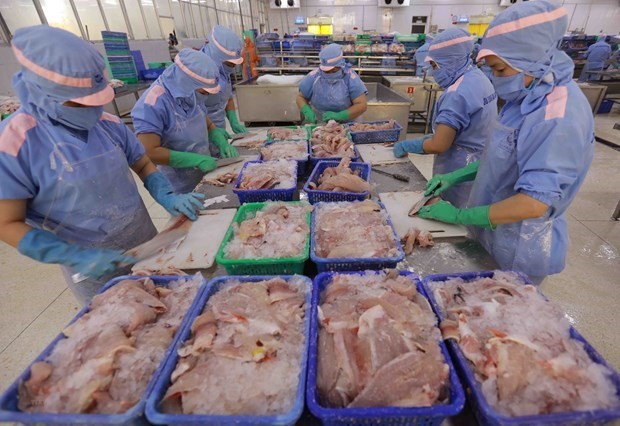
Food, beverage businesses flexibly adjust year-end supply strategies to overcome challenges: Survey
Latest
 |
| Workers process tra fish for export at Cuu Long Fish Joint Stock Company in An Giang province. (Photo: VNA) |
In the survey, 84.6% of food and beverage businesses said the global economic recession is the greatest challenge for them this year, and 76.9% were worried about declining purchasing power.
To overcome difficulties and promote production and business, food and beverage firms are making flexible adjustment in product supply and after-sales service.
They also strive to diversify supply sources, invest in building brand images and marketing, and redesigning customer loyalty programmes. At the same time, they also seek to expand to adjacent markets and apply IT in business administration.
Vo Trung Hieu, Director of International Business Vinamilk, said that the company continues to proactively change its operating methods, increase investment in equipment, focus on training and developing human resources, and adopt digital and green transformation to adapt to new conditions.
Regarding New Zealand and Australia – the two countries that have high environmental requirements, Vinamilk is working towards using HDPE packaging, which is easy to recycle, for all of its products exported to these two markets before 2025, he said. Hieu went on to say that currently, export products supplied to New Zealand and Australia do not have attached plastic straws and the lids are easier to open to minimise discharging plastic waste into the environment.
Vinamilk has recorded a two-digit growth in revenue in the Australian market.
General Director of Vietnam Report Vu Dang Vinh is optimistic about the growth prospect of the food and beverage industry, explaining that the State Bank of Vietnam has lowered lending interest rates for four consecutive times, thus helping many businesses in the industry reduce borrowing costs and increase access to capital as well as promoting their production and development of distribution channels.
Another growth driver of the sector is the rising number of foreign tourists coming to Vietnam in recent month, pushing up the consumption of food and beverage.
The shift in consumption trend from traditional to modern retail channels also has a positive impact on growth for the food and beverage industry, Vinh said, adding that a survey conducted by Vietnam Report revealed that the majority of consumers in big cities shop for food and beverages through modern channels, with 87.1% buying at supermarkets and shopping centres, 88.7% purchasing online and 59.1% at convenience stores.
This year, the proportion of food and beverage companies maintaining revenue growth has decreased across most distribution channels. However, the e-commerce channel continued to demonstrate relatively stable growth compared to the overall market and is the only channel that did not report a revenue decline. Up to 90% of companies with e-commerce operations said they posted revenue growth compared to the same period last year.
























